|
|
|
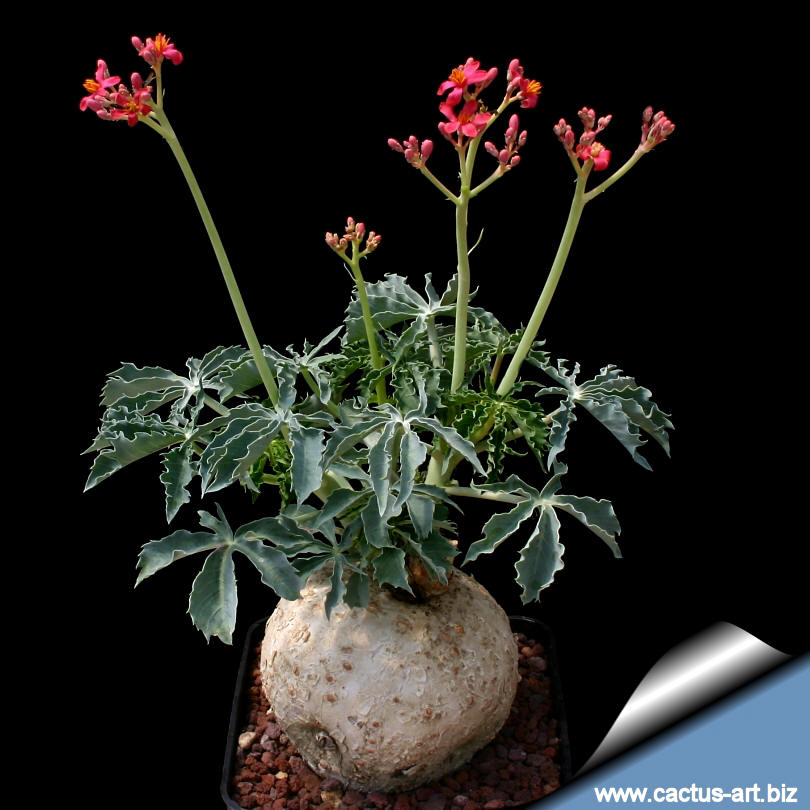
Jatropha berlandieri is cultivated
mainly for its globose caudex (or swollen trunk). With the onset of
spring the caudex sprouts short branches with glaucous palmated leaves.
|
|
Description: Jatropha
berlandieri is a perennial herb that grows from an enlarged,
tuberlike woody roots (caudex) it is above ground in cultivation,
although its caudex is underground in nature, dormant in winter.
Caudex: Large globose, pastel-white up to
20 centimetres thick and 30 cm tall (or more).
Branches: Should only get 10 centimetres, but in culture seems to
get more than 35 centimetres long.
Leaves: Deciduous, palm-shaped up to 10 cm long and very deeply
lobed five to seven times.
Flowers: Showy, arrayed in loose clusters at the ends of long
stalks bright pink to poppy-red. Each inflorescence bears individual
flowers of which 3-4 female and 10-12 male each up to 12 mm wide.
Blooming time: Feb-Nov though-out the growing season (mainly in
summer).
Fruits: The fruit is a green, pea-like three-lobed capsule
containing three seeds.
|
|
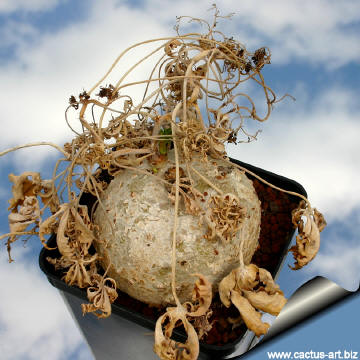
(November-February) Dormant phase |
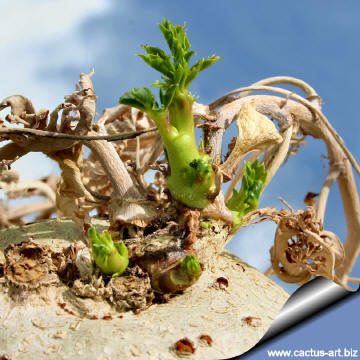
(March) The new growth |
|
. |
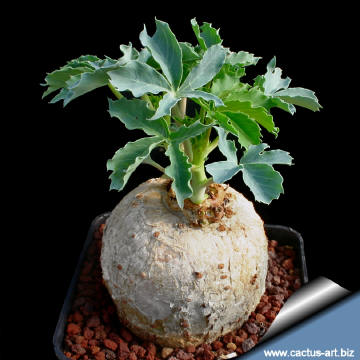
(April) Shoots begin to stretch out... |
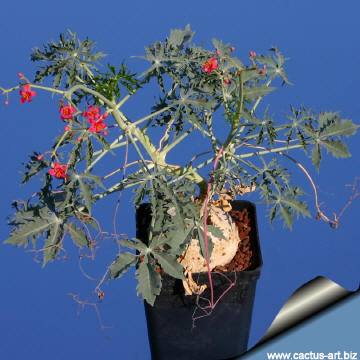
(June to August) blooms |
|
|
|
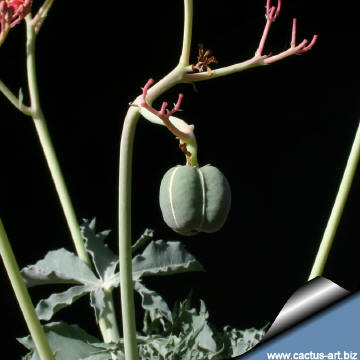 |
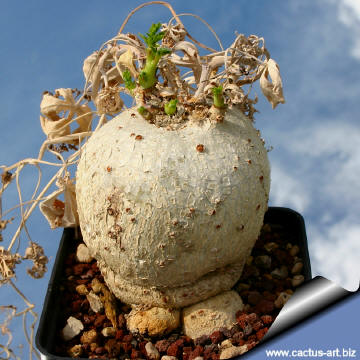 |
|
. |
|
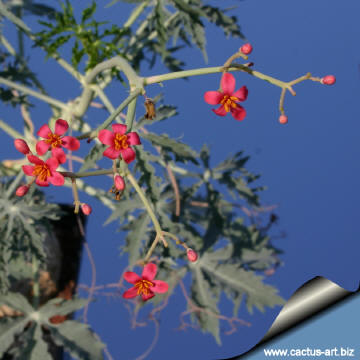
|
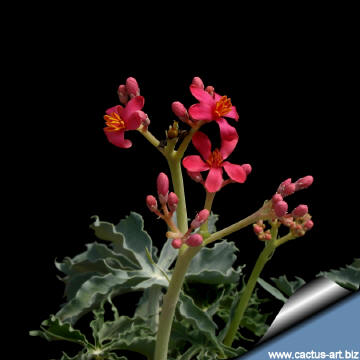
|
|


Advertising
|
|
|
|
|
Family: Euphorbiaceae
Scientific name:
Jatropha berlandieri Torrey 1858.
Common Name: Jatropha Buddah
Belly, Baseball Plant
Synonyms:
- Jatropha
cathartica Teran & Berlandier 1832
- Adenoropium berlandieri
Small 1927
Origin: Texas, Mexico, Central America.
Habitat: Grows scattered among the brush
mainly on clay soil in hot, arid regions. This is a caudiciform plant
adapted to prolonged periods of drought it can store water and survive
many months without rain.
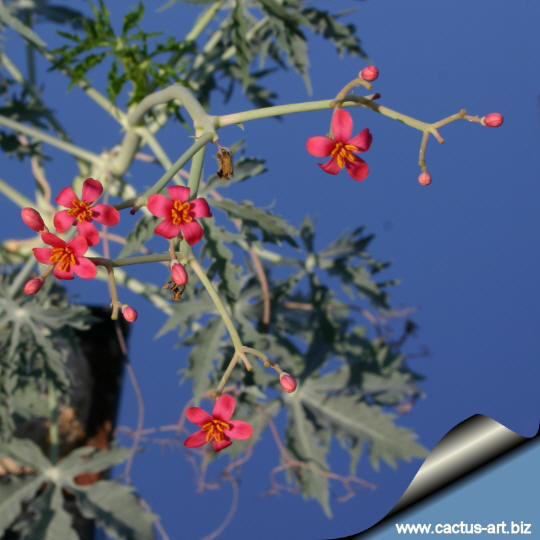
|
|
|
|
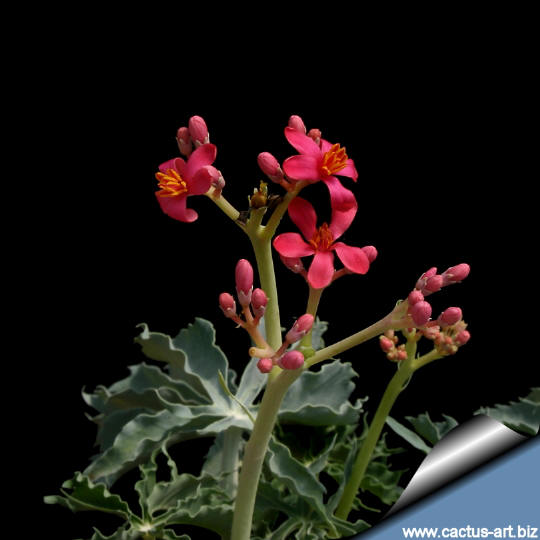
This plant produces many long-lasting spikes of mall, coral-red
flowers from the tips of its short stems in summer.
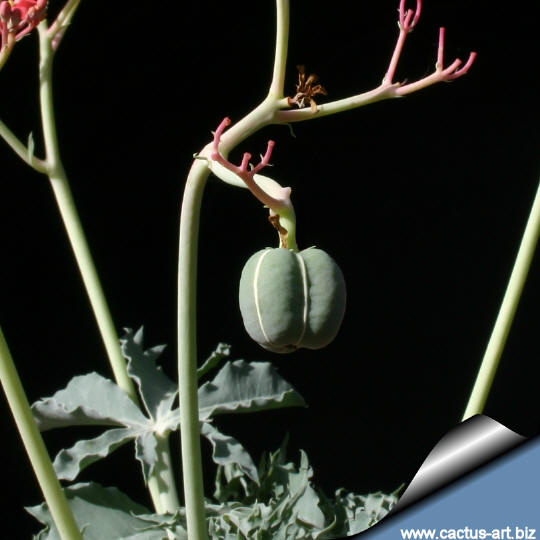
The fruit is a green, pea-like three-lobed capsule
containing three seeds. |
|
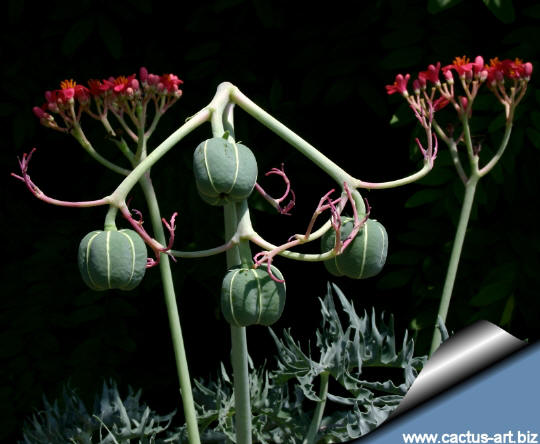
Cultivation: Good for pot culture it adapts well in bright windows
in the home and greenhouse. Soil should be a succulent/regular plant mix
and should drain well and be allowed to dry between waterings. This
slow-growing plant likes sun or shade and can rot (the stems become very
soft and gummy) if it is cold and damp. It go dormant during the winter
and the leaves and the short branches dry out (the dry stalk must be
pruned in winter)
Reproduction: Seeds/Cuttings.
|
|